Data Highlights of China’s Economy in H1
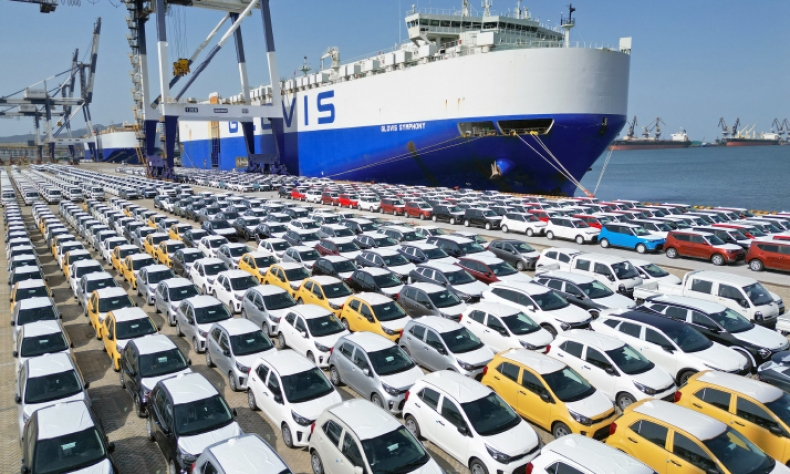
Facing external challenges and domestic pressures, rebounding economic drivers will steer the Chinese economy toward further growth.
Pat Gelsinger, Chief Executive Officer of U.S. tech firm Intel, once again landed in China in early July, his previous visit to the country having occurred three months earlier. On July 11, Intel released Habana Gaudi 2, a deep learning accelerator card designed specifically for the Chinese market. The product can be used to enhance artificial intelligence (AI) training and inference capabilities, delivering improved performance and efficiency for deep learning tasks in China.
Intel has developed a firm footing in China. Today, over half the company’s global supplies of mobile processors, chips designed for laptops, tablets, smartphones and other portable devices, and semi-finished wafers, a wafer being a thin slice of semiconductor material that’s used in fabricating integrated circuits or chips, are produced at its base in Chengdu, capital of Sichuan Province in southwest China. During his visits, Gelsinger said China is one of the most important markets in the world for Intel. Over the course of nearly four decades, the company has established long-term relationships with Chinese partners and customers alike.
Like Gelsinger, over 40 senior executives of major multinational companies, including U.S.-based Apple and Tesla, visited China in the first half of this year (H1), casting their votes of confidence in the Chinese market bolstered by an economy in steady recovery.
Since the start of this year, China’s economic performance has picked up. Its 5.5-percent GDP growth in the first six months was one of the fastest ones among major economies, National Bureau of Statistics (NBS) spokesperson Fu Linghui told a press conference on July 17 when publishing major economic performance indicators of H1.
China’s GDP reached 59.3 trillion yuan ($8.3 trillion) in H1. The growth rate exceeded the year-round speed of 2022, which was 3 percent, according to data released by the NBS.
“Facing external challenges and domestic pressures, rebounding economic drivers will steer the Chinese economy toward further growth,” Fu said.
Growth drivers
The service industry was a highlight of H1 economic growth. According to the NBS, the value-added service output went up 6.4 percent year on year, higher than that of 2022 overall.
The hospitality, retail and transportation sectors steadily recovered, and demand for digital and technological services kept improving.
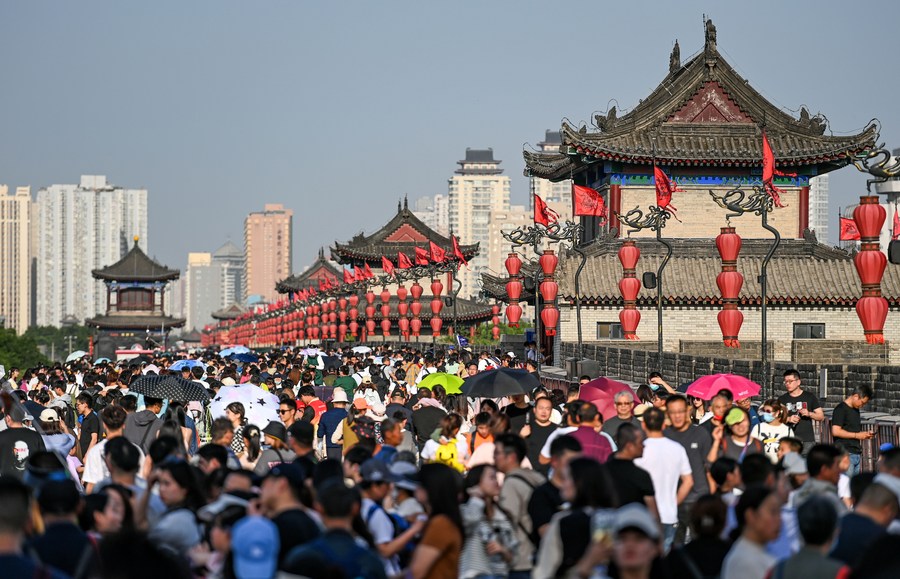
Of particular note is how H1 was marked by people’s pent-up desire to visit domestic and international destinations after the three-year COVID-19 pandemic, a phenomenon popularly known as “revenge travel.” As the Ministry of Culture and Tourism estimated, China saw more than 2.38 billion domestic tourist trips during this period, up 63.9 percent year on year. Alipay, e-commerce giant Alibaba’s digital payment platform, said that per-capita consumption of its users traveling abroad increased by 24 percent from 2019 in the January-June time frame this year.
Netizens posting previously unknown tourist tips and trips on social media led many domestic regions to become hot travel destinations, including Zibo, a city in Shandong Province now known for its local barbecue, and Guizhou Province with its super popular rural basketball games and ethnic culture. The summer vacation has seen a spike in the popularity of study tours among the country’s younger generations.
According to the NBS, consumption contributed over 70 percent of H1 economic growth. Retail sales of consumer goods went up 8.2 percent year on year. Xu Hongcai, Deputy Director of the Economic Policy Commission at the China Association of Policy Science, told Beijing Review that the consumption of offline services has made a remarkable recovery, but mostly in the food and beverage industry. “In the aftermath of the pandemic, many people remain prudent when it comes to the consumption of big-ticket items,” he said.
New impetus
Value-added industrial output went up 3.8 percent year on year in H1. Output of solar cells, new-energy vehicles (NEVs) and industrial-control computers and systems saw notable growth. Data from the China Association of Automobile Manufacturers showed that NEV output went up 42.4 percent.
Chinese enterprises are seeking smarter and greener growth. “Lighthouse factories,” the world’s most advanced factories, are leading the way in the adoption of Fourth Industrial Revolution technologies. This select group of manufacturing sites represents the leading edge of technology adoption at scale. According to a white paper on the global lighthouse network released by the World Economic Forum and McKinsey & Co. earlier this year, 50 of the 132 such companies worldwide are located in China.
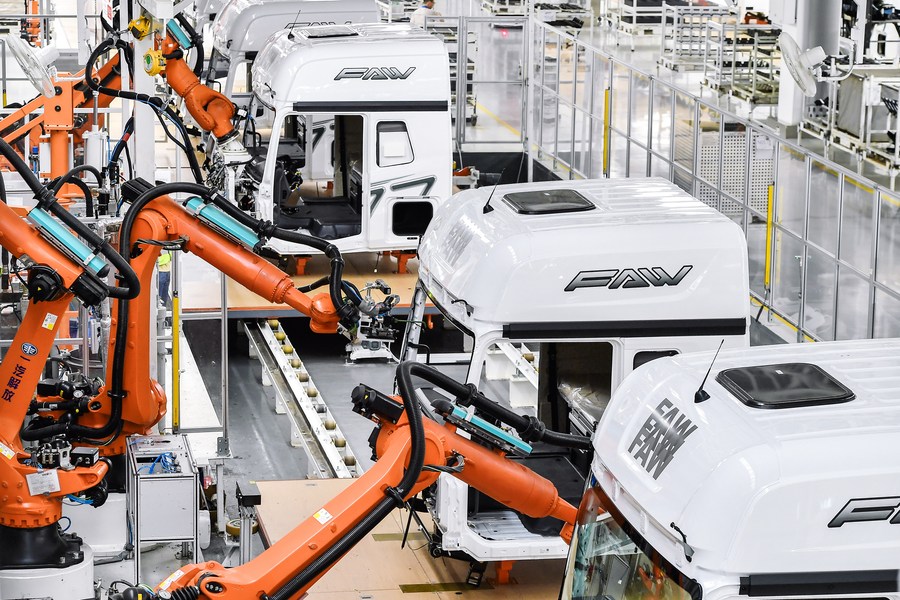
Qingdao Haier Refrigerator Connected Factory, owned by home appliance producer Haier Group, headquartered in Qingdao, Shandong, is one of them. According to the white paper, the factory has leveraged big data and advanced visual inspection technology to accelerate research and development, and upgrade manufacturing and logistics scheduling.
“The Internet of Things-based system allows us to create customized designs for clients, enhance delivery efficiency and ensure product quality,” a factory executive who asked to be identified with his surname Liu told Beijing Review, adding it only takes three hours to produce a refrigerator in the factory.
The site has launched an AI-based system for identifying defects, which can uncover refrigerator door height differences as tiny as 0.01 mm, and adopted a multi-tiered smart logistics system for the smooth transportation of materials. Robots, instead of humans, now do the heavy lifting of refrigerators and install the weighty compressors, responsible for producing the actual cooling, underneath.
According to the white paper, the factory’s order response time has been shortened by 35 percent, production efficiency has been increased by 35 percent and quality performance has also been improved by 36 percent after adopting the system.
Thirteen Chinese enterprises and research institutes entered the list of global top 50 holders of green and low-carbon technology invention patents, the National Intellectual Property Administration said on July 18. Among them are lithium-ion battery supplier Contemporary Amperex Technology Co. Ltd. and BYD, the country’s top-selling electric vehicle brand.
Since this year, the government has introduced a slew of supporting policies for domestic enterprises, especially private firms. “Considering the long cycle from material purchasing to production and sales, it takes longer for industrial production to rebound compared with consumption. The government needs to further cut taxes and other fees to support micro, small and medium-sized enterprises,” Xu said.
Key issue
Unemployment rates have been of grave concern in China this year. According to the NBS, the nationwide surveyed urban unemployment rate stood at 5.3 percent in H1, 0.2 percentage points lower than that in the first quarter of this year.
Over 33 million of Chinese young people aged 16 to 24 had entered the labor market as of May this year. Currently, around 6 million of them are still seeking employment. Though the surveyed unemployment rate of the population aged 16 to 24 hit 21.3 percent in June, the figure is expected to decline after August when many of this year’s fresh college graduates will have landed a job, the NBS said.
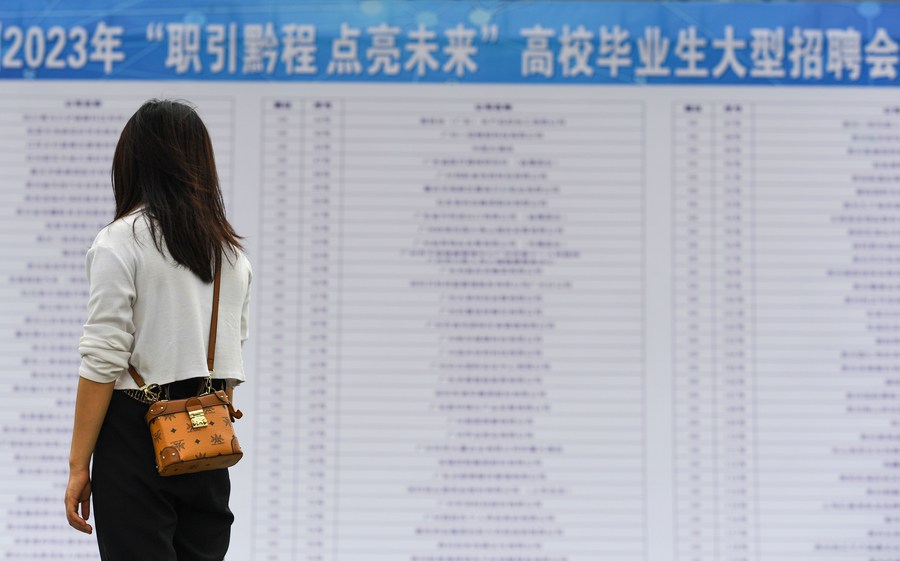
To encourage companies to hire young job seekers, the government has granted companies a one-off maximum subsidy of 1,500 yuan ($208) for each young job seeker they hire since 2022. The policy will remain effective until the end of this year.
New professions and self-employment are swiftly becoming popular options for many young people. Occupations such as on-demand home-cooking services and wardrobe organizers have emerged.
Both Gen Zs, Zhang Qi and Zhang Qingyou quit their previous jobs and started a housekeeping company in Chengdu. “We think housekeeping is not a job people should look down up. It may be tiring, but it gives us much more freedom to actually live a life,” Zhang Qi told Beijing Review.
And as the country embraces low-carbon development on an ever-wider scale, low-carbon consultant is now a new career. These consultants help businesses systematically reduce the carbon intensity of their operations, supply chain and product mix.
Opening wider
In the January-June period, China’s trade in goods grew by 2.1 percent year on year to 20.1 trillion yuan ($2.8 trillion), the General Administration of Customs of China said. It is the first time the total imports and exports exceeded 20 trillion yuan ($2.7 trillion) in the corresponding period.
In H1, many international expos, including the China International Consumer Products Expo and the China Import and Export Fair, took place offline, facilitating exchanges between domestic and foreign businesses. Many trade companies also engage in cross-border live-streaming and once again venture abroad in groups to attract overseas clients.
Major multinational companies, like Intel, have demonstrated the importance they attach to the Chinese market. As Tao Lin, Vice President of U.S. electric car maker Tesla, told the 2023 China Auto Forum in Shanghai on July 5, “China has been a key market for Tesla and will be another global center of the company. Tesla will play a role in driving China’s auto industry to go global.”
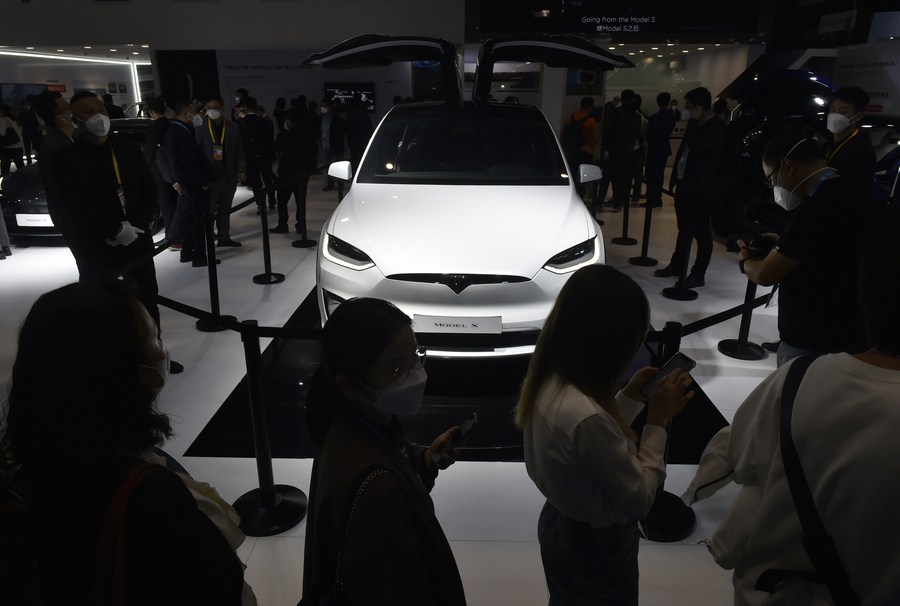
According to Tesla, the company sold over 470,000 vehicles in China in H1, up 61.7 percent year on year. Over 95 percent of the parts for its locally made cars are produced at the company’s Shanghai Gigafactory. As of June this year, Tesla had launched over 1,600 supercharger stations in the Chinese mainland.
“Through improving investment in the Chinese market, multinational companies will benefit from China’s stable supply chains and booming new technologies, and will also drive China’s industrial growth,” Pan Helin, Co-Director of the Digital Economy and Financial Innovation Research Center at Zhejiang University’s International Business School, told Beijing Review.
The outlook
According to the latest report on H1 global economy of KPMG, an auditing company based in the Netherlands, major economies throughout the world—most recently the UK and U.S.—are facing their own domestic pressures, delaying any hopes of improving market conditions and a drop in inflation.
“Global growth is expected to be driven by the recovery of the Chinese economy and a relatively strong growth in some of the emerging markets,” Yael Selfin, Chief Economist at KPMG in the UK, said in the report.
According to Xu, China still faces external challenges. “The number of foreign trade orders from some developed economies reduced over the past six months. China needs to further diversify its foreign trade markets and widen the country’s opening up,” he said.
Xu stressed the need to boost domestic demand for the rest of this year. “The government is expected to provide more coupons to boost consumption. For a long-term effect, it should work to improve people’s income by increasing support to, for example, private enterprises,” Xu said.
“As for boosting new growth drivers, the government should improve investment in fields like low-carbon industries, the digital economy and smart manufacturing as well as service industries with great potential, such as senior care,” he said.
 Facebook
Facebook
 Twitter
Twitter
 Linkedin
Linkedin
 Google +
Google +










